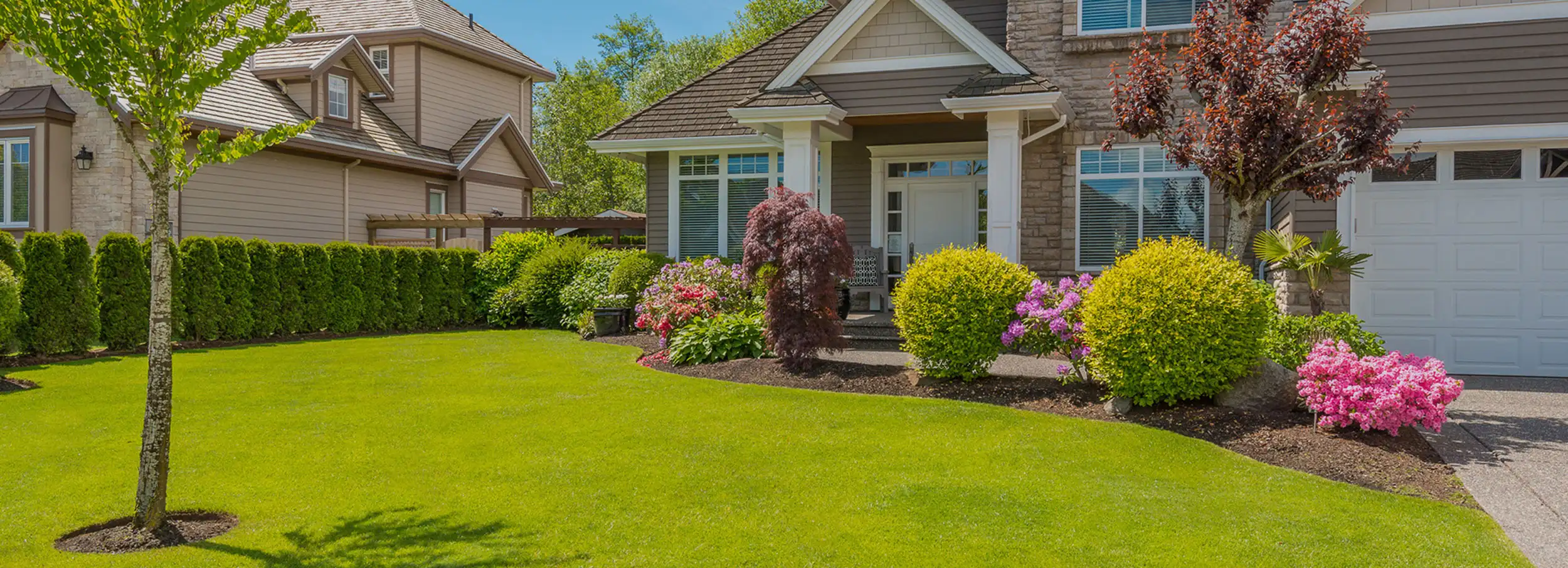Elevate Your Building's Visual With Sustainable Landscaping Layouts and Eco-Friendly Practices

Benefits of Lasting Landscaping
Implementing sustainable landscape design techniques not just preserves natural sources but additionally promotes biodiversity and boosts general ecological health and wellness. One substantial advantage is the reduction of water consumption via the use of drought-resistant plants, rain gardens, and reliable watering systems.
Furthermore, lasting landscaping can boost soil wellness by decreasing making use of chemical fertilizers and chemicals, consequently creating a healthier atmosphere for plant development and useful soil microorganisms. This, in turn, enhances the total durability of the landscape to endure environmental stress factors and climate adjustment influences - lawn cleanup Jacksonville. Furthermore, sustainable landscape design methods can attract varied wild animals, including pollinators like butterflies and bees, fostering a more vibrant and balanced ecological community within the building
Incorporating Indigenous Plants
To construct upon the advantages of sustainable landscaping, a critical focus on including indigenous plants can even more boost eco-friendly strength and promote biodiversity within the landscape. Indigenous plants are types that naturally happen in a particular area and have developed to flourish in the local environment, dirt problems, and ecological community. By including indigenous plants in landscaping layouts, homeowner can reduce water usage, minimize the demand for chemical pesticides and fertilizers, and sustain the regional wildlife population.
Including indigenous plants likewise assists in protecting the distinct character and identity of a region's flora. These plants commonly call for much less maintenance once established, making them a lasting and affordable landscaping remedy over time. Additionally, indigenous plants can draw in native pollinators like butterflies and bees, adding to the general health and wellness of the ecosystem.
When picking native plants for landscaping jobs, it is necessary to select types that are fit to the particular environmental conditions of the site. Consulting with local nurseries or arboretums can provide important support on selecting the ideal native plants for a particular area. By integrating indigenous plants into landscaping designs, homeowner can produce stunning, sustainable outside spaces that profit both the community and the atmosphere.

Water Conservation Methods
Efficient watering techniques play an important function in sustainable landscape design methods, making certain ideal water conservation initiatives in exterior spaces. Leak watering provides water directly to the origins of plants, lessening dissipation and overflow.
Along with advanced watering methods, xeriscaping is one more water-saving landscape design technique that concentrates on using drought-resistant plants, mulch, and reliable irrigation to create a low-water landscape design - landscaping company Jacksonville. By choosing indigenous plants that are fit to the local climate and dirt conditions, residential or commercial property proprietors can lower the need for too much watering, ultimately conserving water and promoting a lasting exterior environment
Eco-Friendly Hardscaping Ideas
Enhancing outside areas with environmentally friendly hardscaping functions can add dramatically to sustainable landscape design practices. Choose for products like recovered timber, recycled concrete, or natural stone to decrease ecological impact when thinking about hardscaping components. These materials not only add a special visual visit our website charm to your outside room yet additionally reduce the requirement for brand-new resources extraction.
Applying permeable paving choices such as crushed rock or absorptive concrete can assist lower water overflow and promote groundwater recharge. These options permit rainwater to leak into the ground, protecting against erosion and reducing the worry on stormwater systems.
Incorporating native plants into hardscaping layouts can additionally enhance eco-friendliness by supporting regional wild animals and minimizing the demand for too much watering or read this post here chemical therapies. By including eco-friendly walls or upright gardens, you can present more vegetation into metropolitan setups, boosting air quality and biodiversity.
Integrating energy-efficient lights, such as solar-powered LEDs, right into hardscaping designs can decrease electricity consumption and reduced your residential property's carbon impact. Focusing on eco-friendly hardscaping concepts not only boosts the charm of your exterior area but additionally shows a commitment to ecological stewardship.
Maintenance Tips for Lasting Landscapes
:max_bytes(150000):strip_icc()/2583801_toddd_60-1-c7bb52ede7254a38bb9cbe1978bc7db5.jpg)
Regularly prune plants to promote healthy growth and stop overgrowth that can bring about pest conditions or problems. Use organic plant foods to nourish the soil and plants without hazardous chemicals that can seep right into the atmosphere. For hardscaping components, such as absorptive pavers or stone paths, consistently clean them to protect against debris build-up and preserve their functionality. By remaining proactive with upkeep jobs, you can protect the charm and sustainability of your landscape for several years to come.
Verdict
In final thought, sustainable landscape design techniques offer various advantages for residential property proprietors, from improving the visual charm of the environments to advertising ecological preservation. By including indigenous plants, find out this here implementing water conservation techniques, and using green hardscaping ideas, homeowner can develop attractive landscapes that are also environmentally accountable. With appropriate upkeep, sustainable landscapes can prosper and add to a much healthier environment for both human beings and wild animals.
Furthermore, lasting landscape design can improve dirt health by reducing the usage of chemical fertilizers and pesticides, consequently producing a much healthier environment for plant growth and useful soil organisms.To build upon the benefits of sustainable landscaping, a critical emphasis on including indigenous plants can even more improve eco-friendly strength and promote biodiversity within the landscape. By including native plants in landscape design layouts, residential property proprietors can lower water use, lessen the need for chemical pesticides and plant foods, and support the local wild animals populace.
These plants often require much less upkeep once established, making them a sustainable and cost-effective landscaping service in the lengthy run. By incorporating indigenous plants into landscaping designs, home proprietors can produce attractive, sustainable exterior spaces that profit both the environment and the community.